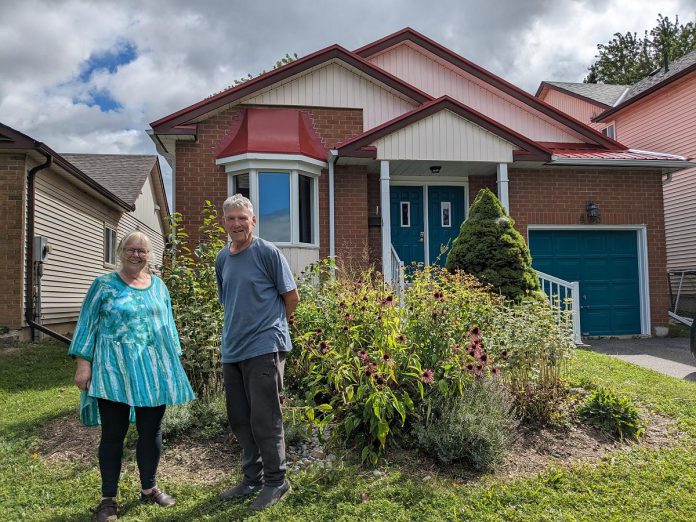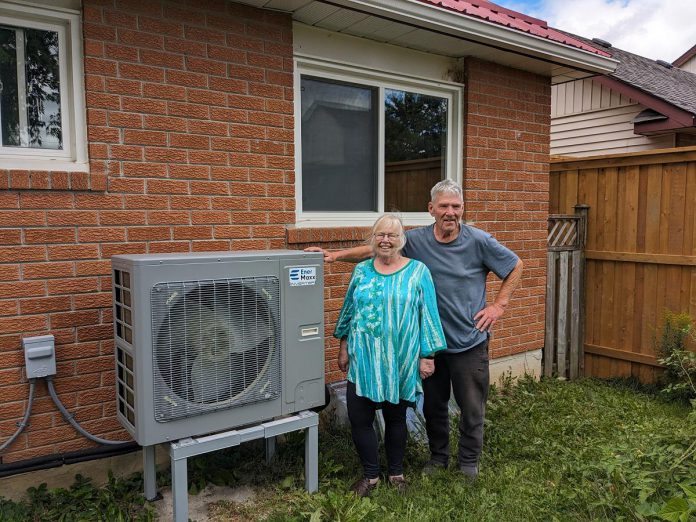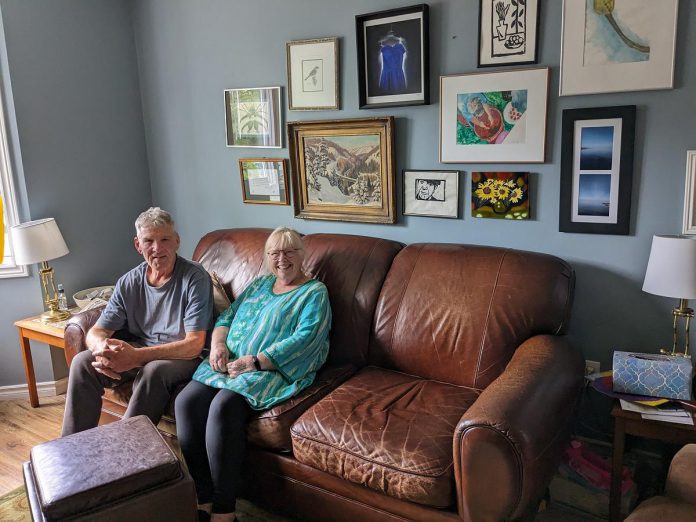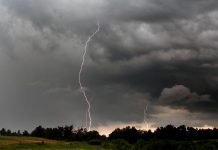
I became a registered energy advisor with GreenUP nearly two years ago because I wanted to work directly on eliminating the use of fossil fuels in our community.
Since becoming an energy advisor, I have performed energy assessments on over 215 homes in our area. The retrofits completed by my clients are saving over 1,600 gigajoules of energy annually, which is the equivalent of 90 tonnes of greenhouse gas emissions. Together that is enough energy to power about 12 homes.
Home energy retrofits have varying degrees of impact and in order to meet our communities 2030 emissions reductions targets Peterborough will need to see many “deep retrofits” where energy use is reduced by 50 per cent or more.
I’m proud to share one example of a deep retrofit that is very close to me — the retrofit my parents did on their home in the south east of Peterborough.
My parents, Jim and Susan Blakelock, moved to Peterborough in November 2020. They moved here to be closer to their three grandchildren — my kids. They bought a bungalow built in the 1980s that needed a few updates.
They were excited to support me in my new career by having me do my first home energy assessment on their home. When I did the assessment, I found many areas for improvement.

Their unfinished basement was only insulated to R8 halfway down the walls — today’s building code requires R22 for basement insulation. The attic had about six inches of blown-in insulation, a value of R20 which is much less than the R50 required by today’s building code.
My parents had already replaced the furnace immediately upon moving in, but the air conditioner was older. The hot water tank was gas and an older less-efficient model with a pilot light.
All in all, their EnerGuide rating was 135 gigajoules. This value is almost twice the energy that a house built to today’s building code would use. The house emitted an estimated 5.5 tonnes of greenhouse gas emissions annually.
After receiving my report, my parents steadily proceeded to work away through the list of upgrades I provided them.
They added blanket insulation to the walls in the basement, bringing all the foundation walls up to at least R20. They had additional insulation blown into the attic to bring it up to today’s code of R50.
Since the furnace was new, they opted to keep the furnace as a backup source of heat and replace their air conditioner with a cold climate air source heat pump. Finally, they replaced the gas hot water tank with an electric heat pump hot water tank. The house was already fairly airtight, and most windows had already been replaced, but they also improved the airtightness by fixing some caulking around the basement windows.

When I came back in May of 2023 to do a post-retrofit assessment, the results were very encouraging. Their new EnerGuide rating was just 60 gigajoules. This was less than half of what it had been previously. They spent about $18,500 on these upgrades, and received $8,500 back in rebates.
After retrofits, my parents’ greenhouse gas emissions went down to 1.2 tonnes annually. This was an outstanding reduction of 78 per cent.
Since then, they have also recently replaced their car with an electric car, and are planning to install solar panels on their roof later this year to offset their remaining energy use.
Working as an energy advisor, it has been very rewarding getting to support my clients, including my parents, in reducing their energy bills and their greenhouse gas emissions. This story is one that I hope is echoed in many homes this year and in the years to come.
Demand for home energy assessments is on the rise, as homeowners begin to look into accessing grants and rebates from the federal government. Interested homeowners can learn more at greenup.on.ca/home-energy and book a pre-retrofit home energy assessment with our team of registered energy advisors.
GreenUP is also currently looking to recruit someone to complete the training to become a registered energy advisor, which is how I got started. If you are knowledgeable and willing to learn about construction and building science, and passionate about decarbonization, please submit an application at greenup.on.ca/download/job-posting-energy-advisor-in-training/.
This article is the last of a series of GreenUP columns that focus on deep retrofits. You can also read Thousands of Peterborough homes will need ‘deep retrofits’ to meet 2030 climate targets, How two Peterborough homeowners ‘electrified’ their homes, and Going solar helps Campbellford couple achieve ‘net zero’ status.


























